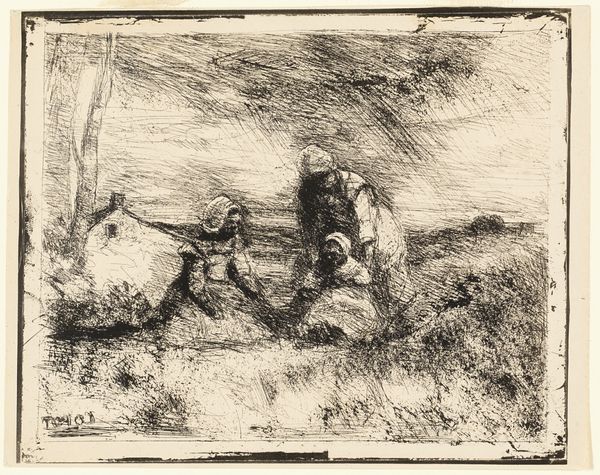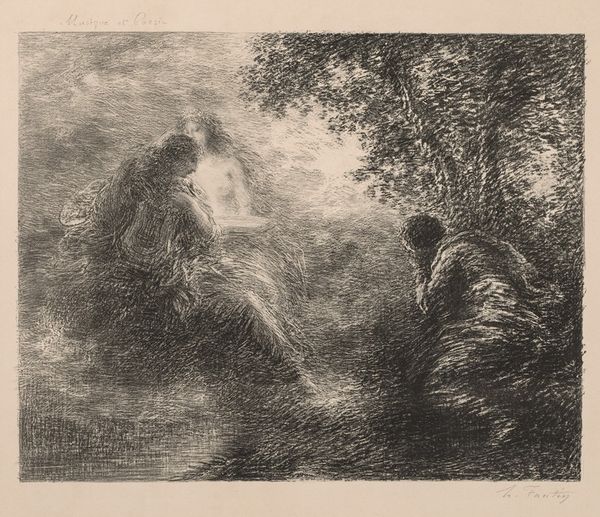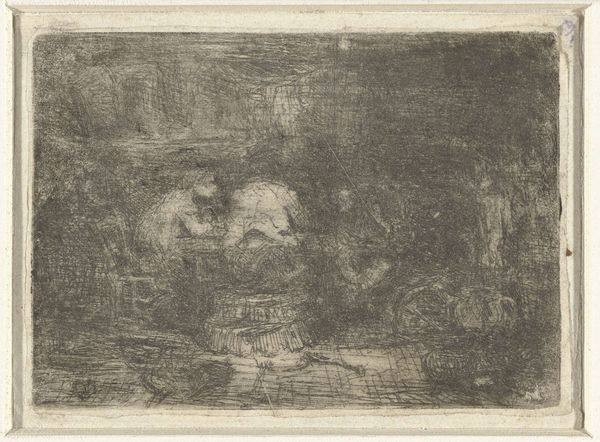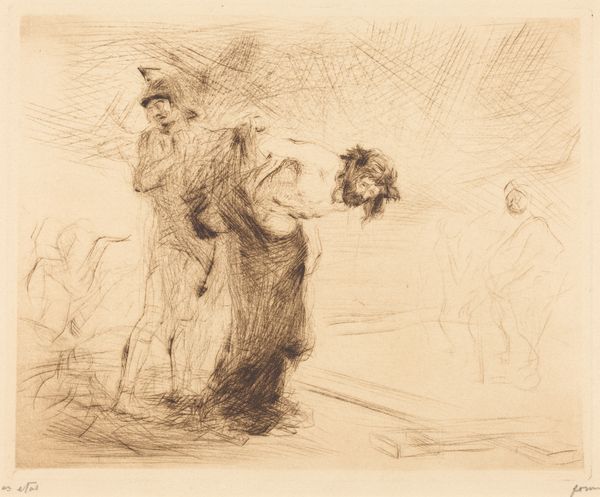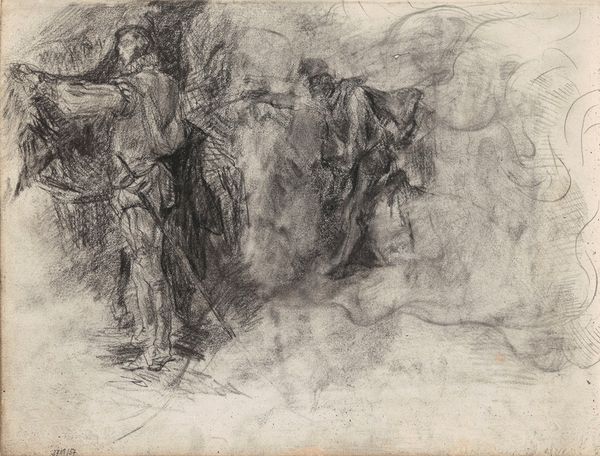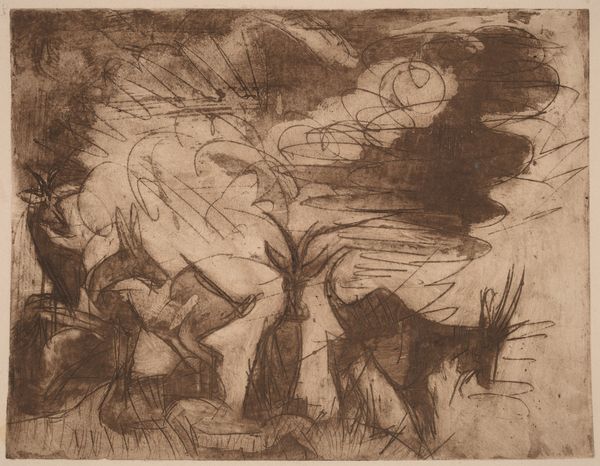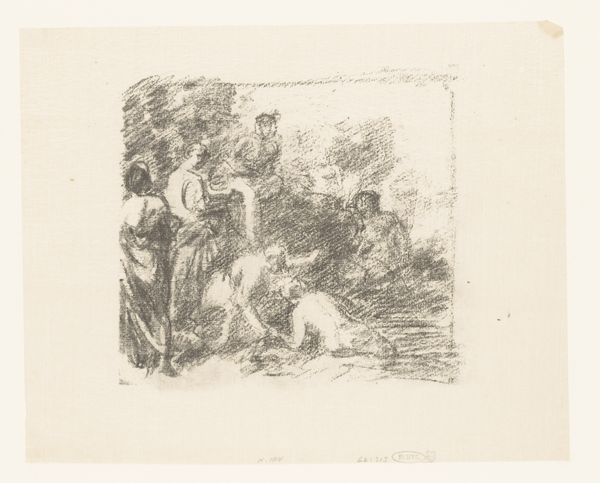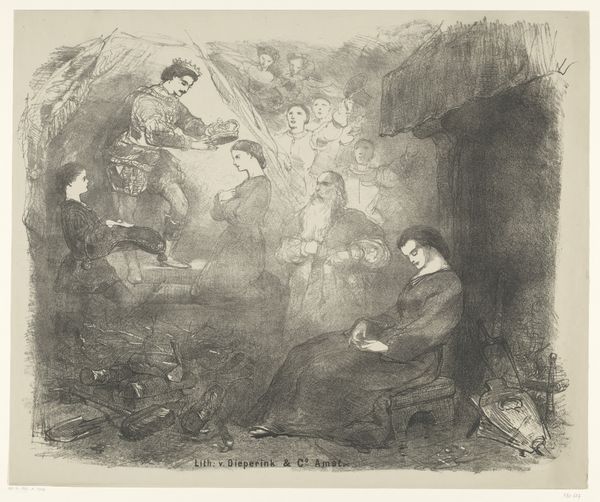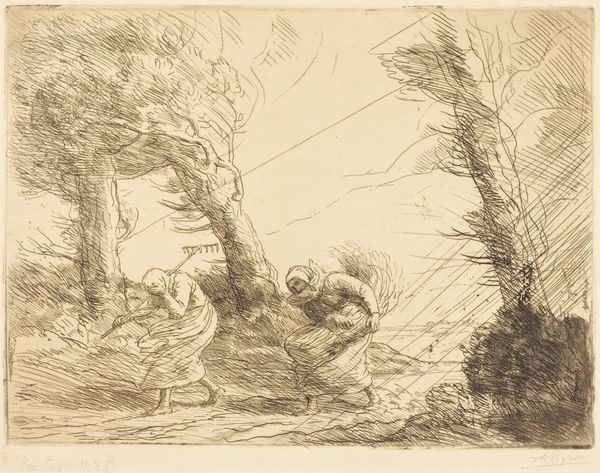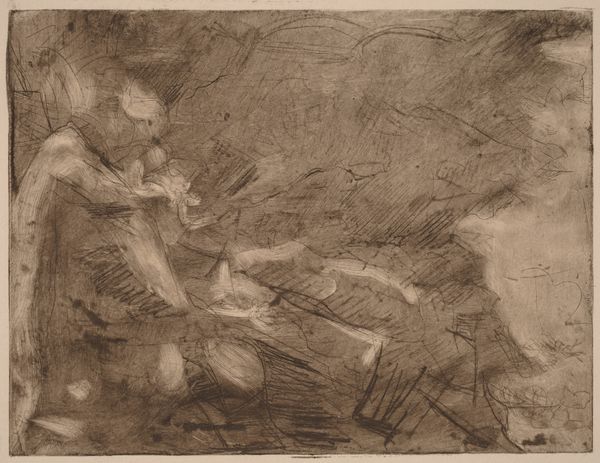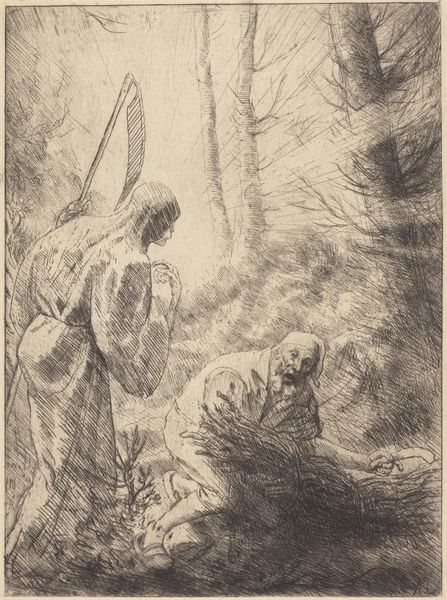
drawing, pencil
#
drawing
#
landscape
#
figuration
#
pencil drawing
#
romanticism
#
pencil
Dimensions: sheet: 17.15 × 23.81 cm (6 3/4 × 9 3/8 in.)
Copyright: National Gallery of Art: CC0 1.0
Curator: What a fascinating and shadowy gathering! This drawing, aptly titled "Group of Figures", dates from the early 19th century and is attributed to Robert Walter Weir. It's rendered in pencil. Editor: It feels… heavy. The muted tones and almost indistinct forms create an atmosphere of somber reflection, or perhaps even hidden apprehension. I'm struck by how Weir uses shadow to both conceal and reveal. Curator: It's difficult to ignore the romantic undertones, certainly. The composition hints at the artist’s era, steeped in significant social transformations like abolitionism and early industrialization. Editor: Structurally, the composition is interesting. There's no clear focal point; instead, your eye drifts from figure to figure, never quite settling. Is this perhaps about a collective experience, something shared amongst them equally? Curator: The anonymity contributes to that, doesn’t it? These figures could represent any community grappling with change or adversity. The power of collective action, or perhaps the burden of collective trauma. It would be very aligned with the Hudson River School, where he later achieved prominence as a landscape painter—celebrating the vast American vista and embedding social ideals in idealized depictions. Editor: There is a striking contrast in the application of the pencil itself, from almost invisible shading at the top right to very dark, dense lines at the front. It’s like the scene is coming into focus even as we look at it. A very active, fluid surface. Curator: Given the period, this might connect to broader debates about identity and representation playing out in public discourse. This pencil study gains importance because Weir himself evolved into a central academician whose history paintings shaped civic values and identity formation for future generations of American artists. Editor: Seeing the contrast, this also leads me to consider temporality within the work itself, right? Are we seeing figures who have yet to come into focus, as if representing future action, against more defined shapes representing those who have already come to represent power and privilege in a visual setting? Curator: Exactly. Thinking about how Weir shaped American art education, it’s quite intriguing to view this shadowy prelude to his artistic voyage. Editor: I find myself drawn to the unresolved tension; it resists any simple decoding, keeping the viewer actively engaged. Curator: A pertinent point—one sees so clearly his artistic vision, slowly being illuminated across time!
Comments
No comments
Be the first to comment and join the conversation on the ultimate creative platform.
